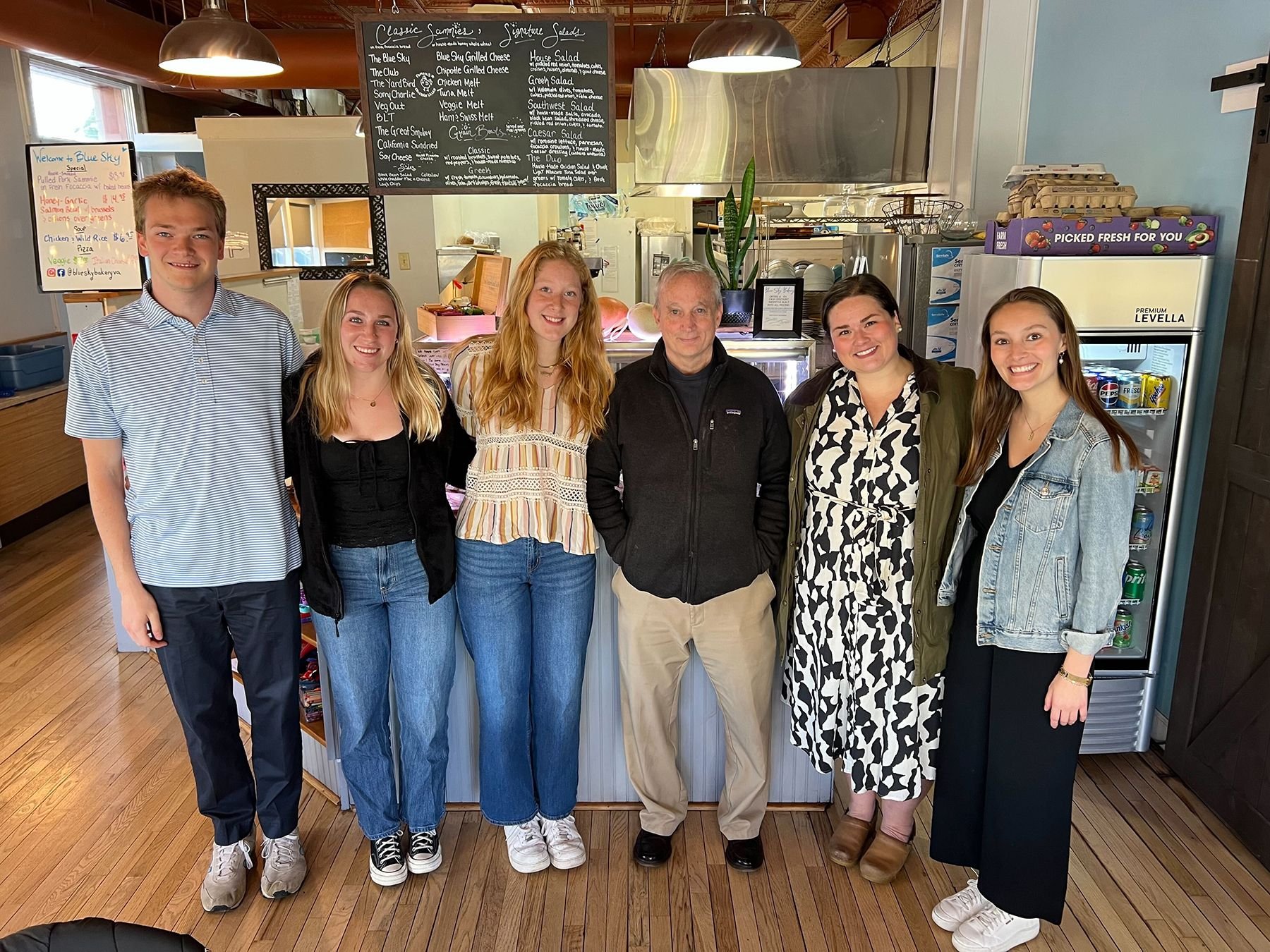Marisa Charley, W&L Bonner program director and instructor of poverty studies in the Shephed Program (second from right) and her students meet with Dr. Jim Withers (third from right) at Blue Sky Bakery in Lexington.
It’s not often that the chance comes along to meet one of your heroes. Marisa Charley, W&L’s Bonner Program director and instructor of poverty studies in the Shepherd Program for Poverty and Human Capability Studies, and a group of Bonners got that chance last Wednesday.
Dr. Jim Withers, founder of the Street Medicine Institute (SMI) and the founder and medical director of Pittsburgh Mercy’s Operation Safety, presented a lecture on March 26 as part of W&L’s Mudd Center for Ethics series on “How We Live & Die.” SMI is an international organization dedicated to facilitating and enhancing the direct provision of health care to unsheltered individuals and working to reach those populations to provide coordinated care. As part of his visit, Withers had the opportunity to connect with a group of students who have been working for more than a year to create a new digital map and provider directory that will help visitors to SMI’s website find networks of street medicine providers in their area.
Kristina Ayers ’25, Bonner Leader majoring in biology, double minoring in poverty and human capability studies and music, took on the street medicine provider mapping project as her Bonner Program capstone. The project’s origins lie in an email Charley sent to Withers and SMI during her POV 202 class during Winter Term 2023. Charley told them she has shown the organization’s documentary, “One Bridge to the Next,” to every class she has taught. After connecting with the organization, Charley committed to taking on a project that would also incorporate student researchers.
The mapping project originated after Ayers and Charley met with the Street Medicine Institute’s executive director, who cited a directory of street medicine providers as a need for the organization. Initially, they expected to add 600 to 800 providers, but the project grew to include nearly 2,000 providers globally. As the project expanded, Ayers eventually assembled a team of other interested students, including fellow Bonners Boris Pekar ’27, a mathematics major with a double minor in data science minor and poverty and human capability studies, and Alexis Thompson ’27, a neuroscience major and poverty and human capacities studies minor on the pre-medical track. The group successfully created the first international database of street medicine facilities and practitioners, leading to a GIS-mapped resource on the organization’s website. The map will enable members and other nonprofits to better coordinate care, identify service gaps and expand their outreach efforts.
Charley has followed Withers’ work for years.
Charley was also instrumental in connecting Withers to the Mudd Center, and she and her students were excited to meet with Withers during his time on campus to discuss their work on the project and allow the students to ask him questions before his talk in Stackhouse Theater. Charley says it was a profound moment for her as an educator.
“Among other things, absorbing the language and posture of deep reverence he holds for those who have been most pushed to the margins has had a profound impact on me,” Charley says, “and has certainly marked my approach to teaching and mentorship.”
Charley says the opportunity to interact with Withers was significant for her students.
“I think students are really hungry for the opportunity to do meaningful work that impacts patients and clients, even if they can’t be in a clinical space,” Charley says.
During his Mudd Center talk, Withers emphasized that trust is built with the people SMI serves through consistent, respectful interactions that prioritize human connection over clinical transactions. He added that the street medicine movement has been strengthened over the years as more networks of providers have connected through conferences and other avenues of communication. The GIS mapping project, he says, offers the organization a whole new way of connecting communities around the world who are engaged in this work.
“Street medicine is still very grassroots,” Wither says, “and much of this work is still organized by and supported by students.” Charley’s students, Withers says, are creating a living, dynamic resource that can help researchers, practitioners and policymakers better understand the scope, diversity and potential of street medicine as a human rights movement.
To read the full article please click the following link.

